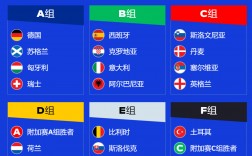英文辩论稿样本
英文辩论稿怎么撰写?来看看范文吧,下面是小编搜集整理的英文辩论稿,欢迎阅读。
Outline for Beginners
Following is a speech outline for (EFL) novice debaters. Too much reliance on this may make your speech inflexible; still, the expressions and the speech flow below are the basic which every (EFL) debater should keep in mind.
■ 1. Greetings
Ladies and gentlemen
Thank you Mr. (Madam) speaker.
Mrhttps://www.diyifanwen.com/fanwen/bianlunsai/Madam chair, and members of this house.
■ 2. Presenting the motion and case
Today, we are going to debate on~https://www.diyifanwen.com/fanwen/bianlunsai/Today, we have the motion that~https://www.diyifanwen.com/fanwen/bianlunsai/Today’s motion is that~.
Under the current situation, there are some problems in~/controversy over~.
The issue behind the motion is that~.
So, in this round, we are going to talk about how to solve the problem.
(Note: of course, this is mainly the task of the Prime Minister)
① However, this motion [has some vague points(words)/is not clear]. Therefore, I would like to define the motion.
② In this round, we will [define the word A as B/limit X to Y/focus on the case in ~].
③ Therefore, our proposal is that~
④ I will explain the mechanism of our proposal.
First, ~.Second, ~.
⑤ We have some conditions to our proposal.
First, ~. Second, ~
■ 3. Showing the (government / opposition) “stance” (or “team line”) for the round.大佬们都在玩{精选官网网址: www.vip333.Co }值得信任的品牌平台!
We will propose you that ~ because ~.
Our team line is that ~ /
The government / opposition side strongly believe (insist) that ~.
■ 4. Presenting your speech outline and team allocation.
We have ~ points to support our proposal (argument). The first point is ~, the second point is ~, and the last point is ~.
I will explain ~.And my partner will explain ~.
I will mainly talk about ~. And my partner will talk about ~
■ 5. Refutation
(Before we go on to our arguments / points/ substantive matters), let me refute back to the Government / Opposition side. I have one / two / … refutation.
① First / second / …, they said ~.
② But, it is (1. not relevant / 2. …).
③ That is because ~.
(e.g. their argument is based on
wrong assumption / analysis /
misunderstanding)
1. not true 5. the opposite
2. not always true
3. not significant
4. not relevant
■ 6. Explaining points.
① [Sign post (i.e. “sign post”, or simple key phrases that summarize the point).]
Our first (second / …) point is ~
② [Summary in one sentence]
It means that ~ / On this point, I will explain that ~.
③ [Reasoning (explanation on how one situation occurs, focusing on “cause and effect”)]
Let me explain how this will happen.
First, ~. Then, ~. / Under the status quo, ~. After the plan adoption, ~. /
As a result / Consequently / At the end of the day / Therefore ~.
④ [Examples and Illustration]
For example, ~ . / Let’s think about the case of ~. /
Ladies and gentlemen, please imagine what could be happened if ~
⑤ [Significance / analysis / Relevancy to the stance, team line, or what you want to prove]
why this is important? This is because ~.
This point is important if we think about the nature / role / first priority / of ~.
What is the nature of ~?
What is the role / top priority of ~?
■ 7. Conclusion
Spend approximately 30 seconds to summarize your speech.
In summary ~ / Let me summarize what I have told you ~ / In conclusion, we find that ~ /
For all these reasons, I beg to propose / oppose.
Because of these reasons, we strongly believe ~.
Therefore, we believe that ~.
Refutation
Refutation, which is to point out the weakness of the other side’s arguments, can be formulated into six basic types as below:
1. not relevant
2. not true
3. not always true
4. not significant
5. alternative play
6. flip
① Not relevant: “What you said is not relevant with what you are trying to prove. “
e.g. [GOV] Korean government should abolish death penalty because Canada abolished.
[OPP] It is not relevant because we are debating on Korea not on Canada.
② Not true: “You are a liar!”
e.g. [OPP] Korean government should not abolish death penalty because it deters crimes.
[GOV] It is not true because crime rate is increasing even though we have death penalty.
③ Not always true: “What you said is not always true.”
e.g. [OPP] Korean government should not abolish death penalty because of the victim families’ feeling.
[GOV] It is not always true because peoples’ feelings are case by case.
④ Not significant: “What you said is not important at all.”
e.g. [OPP] Korean government should have death penalty because life in prison costs much more money.
[GOV] It is not significant because those who are sentenced death penalty are put into jail long years before they are actually being executed.
⑤ Alternative plan: “There is a better plan to solve the problem”
e.g. [GOV] Korean government should abolish death penalty because of the possibility of misjudgments.
[OPP] There is a better solution to the problem, which is to have three trial systems and introduce new technology for investigation. ⑥
⑥ Flip: ”What you said is the opposite. It is actually our point”
e.g. [OPP] Korean government should not abolish death penalty because Koran government should protect its citizens as government role.
[GOV]
Outline: Reply Speech
The purpose of reply speech is quite different from the constructive speeches (e.g. PM speech). In reply speech, you assume the role of adjudicators; to be more precise, you are to explain the reason why your side has won the round.
You are expected to do:
a. explain the criteria to judge the round
b. summarize the round focusing on issues (or “crash point”).
c. Provide new illustrations to emphasize your arguments.
1. Greetings
Thank you Mr. (Madam) speaker.
Good [morning / afternoon / evening] ladies and gentlemen in this house again.
2. Showing the outline.
So far, we have talked about ~.
In order to show, why we have to win this round.
· I would compare both government and opposition sides’ arguments in terms of [two / three] issues in this round. They are ~.
· I have [two / three] questions to ask. They are ~.大佬们都在玩{精选官网网址: www.vip333.Co }值得信任的品牌平台!
3. Pointing out the failures of the other side.
Before going to the issues, I would like to point out the crucial failure of the [government /
opposition] side. That is ~.
4. Comparing arguments focusing on issues (crash points).
· The first [question / issue / crash point] is ~.
· [Your opponent] has said that ~.
Still, we have pointed out that this wrong because ~.
· On the other hand, we have argued that ~ because ~.
Our argument was superior to their argument because ~.
Then, let me go on to the next [question / issue / crash point].
5. Conclusion.
· For all these reasons, [government / opposition] side has won this round.大佬们都在玩{精选官网网址: www.vip333.Co }值得信任的品牌平台!
· Thank you.













